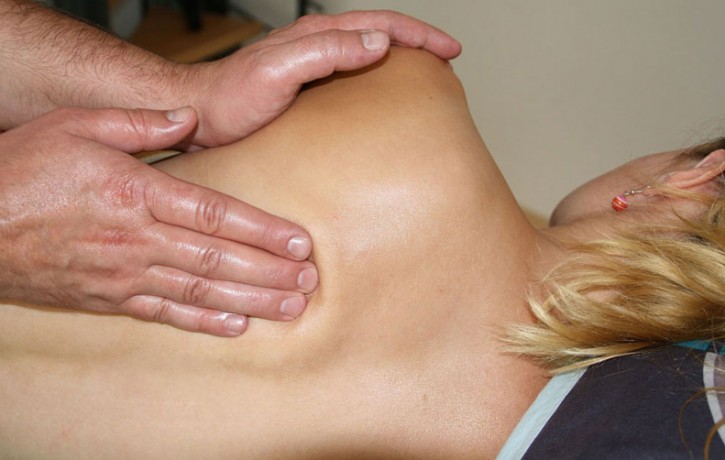in Osteopathy
What is the Difference Between an Osteopath, a Physiotherapist and a Chiropractor?

The question I am asked most when I first speak to or meet a new patient is “What is the difference between an Osteopath and a Chiropractor?” or “What is the difference between an Osteopath and a Physiotherapist?”
It is not a simple answer, after all, each of the professions offer manual therapy, using hands-on techniques and clinical judgement to facilitate and speed up recovery from injury and relieve aches and pains.
The differences lie in the approaches we take. I have hopefully been able to explain the basic differences between the professions, however, there will always be elements of cross over as individuals we all have different experiences as our careers develop which mould us into the manual therapists we are and the way in which we treat our patients.
Osteopathy
Osteopathy works on the basis that physical imbalances and restriction in joint ranges will reduce blood flow and fluid mechanics which then plays a role in dysfunction locally in the tissues.
Osteopathy is a form of manual therapy that treats a vast range of painful conditions, mostly within the musculoskeletal system but also relating to the viscera (the internal organs). Osteopaths use comprehensive clinical and anatomical knowledge to identify any physical issues involved by observing movement and palpating, through touch, the health of the tissues which in combination with a detailed health case history will generate a diagnosis and reasonable prognosis.
The aim of Osteopathy is not merely the relief of symptoms, but identifying and managing any underlying causes of the pain to reduce the risk and ideally prevent re-occurrence.
The treatment itself combines soft tissue massage to address muscular and ligamentous tension along with joint mobilisation and occasionally manipulation, as well as gentle work on visceral structures when required. The management aim is always to identify why the problem has developed and advise on ways to minimise recurrence. by directing specific rehabilitation exercises to ensure patients continue or even improve their activity or chosen sport.
Physiotherapy
Physiotherapy is the most well-known type of manual therapy due to its prevalence within the NHS.
A physiotherapist is trained to a high standard to assess and diagnose your condition and treat your problem so that you can reach your full potential and maintain an active lifestyle. However, NHS Physiotherapists tend not to have diagnostic input, the diagnosis and treatment request tending to emanate from an orthopaedic surgeon or consultant rheumatologist etc.
Physiotherapists work in the rehabilitation of not only musculoskeletal injury but cardiac and respiratory conditions, often using a variety of prescribed exercises that the patient carries out when away from the treatment couch. As a result, treatment will also tend to be more specific than integrative. Physios are also more likely to use machines such as ultrasound or TENS machines to facilitate change in an injured area.
Chiropractic
Chiropractic medicine focuses on assessment on identifying spinal misalignments, known as subluxations. Chiropractors believe that to manipulate these subluxations back into alignment, is to normalise spinal position and affect underlying nerve roots.
Treatment plans are often based on regular adjustments over a set number of sessions in order to wholly correct a disorder. Chiropractors also often use imaging to aid diagnosis such as x-ray. These x-rays will often be conducted in the clinic as part of the course of treatment. I have heard of some clinics that offer up to 5 separate X-rays over the course of a treatment plan (20 or more treatments are quite common in certain clinics) with no functional clinical reasoning and yet this exposes patients to unnecessary levels of radiation.
Inevitably, such a brief snapshot doesn’t do justice to the evolution of three different forms of manual therapy with relatively distinctive methods and philosophy. In this blog, I have merely tried to highlight some of the key differences in clinical practice that you can expect from each.
There will always be exceptions within any profession and the practice of some Osteo’s, Physio’s and Chiro’s crosses over into what may be typically another professions philosophy. In my role as a university lecturer on an Osteopathic degree, I regularly see Physiotherapists studying and retraining in Osteopathy.
My own belief is that there is a very real, and beneficial, psychological component to touch that manual therapists use to help their patients. It is the lack of this hand-on treatment that has led to increasing in the number of dissatisfied patients seeing physiotherapists within the NHS. There are many physio’s that appreciate the use of touch and apply hands-on treatment to help their patients with much success.
My own opinion is that as three separate professions, we are all merely manual therapists and it is how I treat you as the patient that you will judge me on, or compare my skills to any previous experience with a therapist who may have been with an osteopath, chiropractor or physiotherapist.
This article was written by Matthew Oliver M.Ost DO ND. Osteopath.
- Deepen Embodiment: Somatic Breathing with the Realization Process - 20th June 2025
- How Massage Transforms Muscle and Physical Health - 16th May 2025
- What is Traditional Chinese Medicine (TCM)? - 29th April 2025
